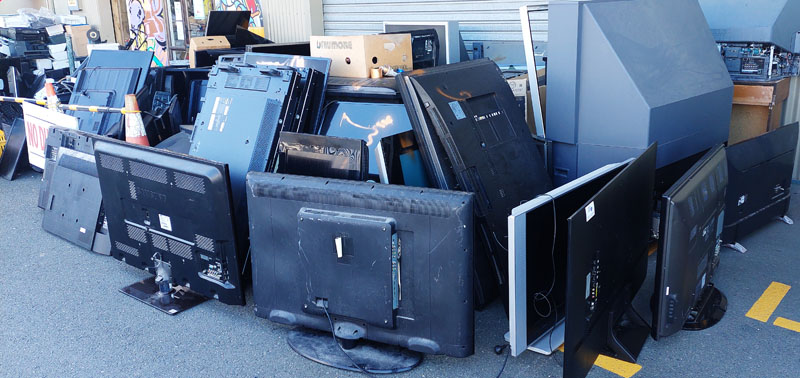Anybody that visits the e-waste recycling shop at the recycle centre will find it hard to ignore the never ending pile of TVs down there. Some will be working having been replaced with a newer model, some broken to varying degrees, often a cracked/damaged screen.

I had suggested we could make a video wall for the Earth Lab - There would be plenty of working ones available, but what could we do with the broken ones? Since they normally have a neon (or LED) backlight panel, I'd wondered if they could be a way of lighting the Lab.
As chance would have it, today Sterling was dismantling a video wall he'd put together with second hand screens and I went over to see if I could get some to use in the Earth Lab. Unfortunately I was a bit late but there were a couple left, one was a heavy (and power hungry) plasma TV and the other an LED screen which he said I could have. He mentioned the screen was damaged but when I tested it it was more damaged than I'd hoped. So, plan B, what could be salvaged? I striped the TV down, salvaging the speakers of course. I removed the front screen and the main control board, leaving just the backlight panel, the fluorescent tube driver and the main power supply board.
With all the control electronics gone though there was no way to switch the power on, let alone the back light. Fortunately some of the pins on the socket that had connected the main board and the power supply were labelled - including ‘POWER_ON’ and ‘BL_ON’ - great!
Fortunately circuit diagram for the power board can be found on line (or at least one very close to it) as well as a discussion on the voltages used. The POWER_ON and BL_ON were expecting a 3.3V logical ‘on’. I had an ESP8266 microcontroller (https://www.wemos.cc/en/latest/d1/d1_mini.html) handy and that has 3.3V logic so I wrote a very quick test program to switch the backlight on and off every few seconds, connected it to the relevant pins and hey presto, it worked!
WARNING: Opening up a TV exposes the high voltage mains wires and capacitors that could produce a serious (fatal) electric shock. Additionally the backlight fluorescent tubes require very high voltages from the driver electronics (these I didn’t touch) so only attempt this unless you know what you’re doing!



